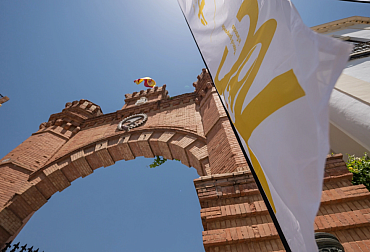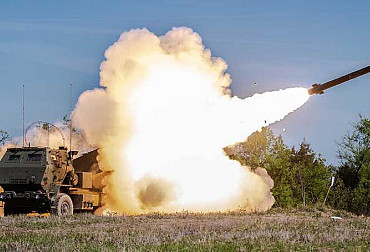AMX 30 AuF1 – 50 years of service of the mighty French self propelled howitzer
The French AMX 30 AuF1 (Automoteur modèle F1) system is a 155mm howitzer on the chassis of the 2nd generation AMX 30 main battle tank (MBT), which served in the French Army from 1966 to 2011. The 155 mm round was introduced by NATO in response to the reinforcement of mechanised units of the armies of the Warsaw Pact states in the mid-1960s. The first self-propelled howitzer of this calibre to be introduced in the French Army was the AMX 13-155 AmF3 type developed from the mid-1950s. It is the lightest and smallest vehicle with such a heavy armament, while the main weapon still does not allow to hit targets at a distance of more than 20 km. Along with the impractical turretless configuration, the army thus paid for the low acquisition cost and availability of a vehicle based on the chassis of the widely used and successful AMX 13 light tank.

Before the introduction pf tje AMX 30 AuF1, the French army's standard self-propelled guns were the 105mm Mk 61 and the 105mm Mk F3. However, the latter had serious drawbacks: its turret was not very mobile, the gun itself lacked protection, and much of the crew had to be brought to work by a tracked vehicle which also carried the ammunition. The decision was therefore taken in the late 1960s to develop a new 155 mm weapon to replace the Mk F3. Called GCT (grande cadence de tir, high rate of fire), it was mounted on a chassis derived from that of the AMX-30.
Under the brief whose main requirements were mobility comparable to a Main Battle Tank and the ability to engage a variety of targets at high speed within a 360° radius, it was developed in the early 1970s. In the early 1970s, the AMX 30 AuF1 system on the chassis of the AMX 30 B tank was fitted with a turret with a 155 mm GCT gun, 39 calibre, and a 42 projectile ammunition supply, with a basic range of 23.5 km, and 28 km with special RTC ammunition and a muzzle velocity of 810 m/s. The 680 hp Hispano-Suiza HS-110 engine gives the howitzer a road speed of 60 km/h, slightly slower than the AMX 30 B tank's speed (65 km/h), with a combat weight of 43.5 tons (4-6 tons more than the main battle tank). About 70 of the 400 howitzers produced were upgraded to the F2 version by installing a more efficient 52 calibres long gun.
The first prototypes were produced in 1972. After a series of successful trials on ten pre-production models, production officially began in 1977. Saudi Arabia, the first country to equip itself with this weapon, placed an order for fifty-one units complete with fire control system. The GCT is deployed in the French army under the name Canon automoteur de 155 mm F1, with 18 per regiment (three batteries with six guns each). Iraq has purchased eighty-five GCTs.
The GCT was manufactured by the Atelier de Construction in Roanne and by a number of French subcontractors. The chassis features a new wrought-steel turret mounted in the center of the hull. The gun features a double-baffle muzzle brake and a vertically sliding breech block. It has an elevation from -4° to +66° (at a speed of 5° per second) and bearing of 360° (at 10° per second). These maneuvers are hydraulically assisted, but manual overrides are also available.
The essential feature of the GCT is its automatic supply system. Forty-two separately-loaded projectiles are transported ready for use in racks located at the rear of the turret. The type of projectiles used varies according to tactical requirements, but the most common composition is six racks of six HE shrapnel shells and one rack of six smoke shells. Reloading is easy, thanks to two large hatches in the rear of the turret. The operation takes the crew (4 men) a quarter of an hour. If necessary, it can be carried out while the gun is in use.
The rate of fire is eight shots per minute. The gunner can choose between firing one shot at a time or six shots in forty-five-second sequences. For manual loading, this rate is reduced to three shots per minute. The GCT can use various projectiles: HE, illuminating, smoke and additional propulsion. The latter, developed by Thomson-Brandt, has a range of 30,500 m. Other projectiles, including a shell carrying six anti-tank mines, are currently being studied. They can also supply the TIR, the towed equivalent of the GCT. The CLGP (an American-made guided shell) could also be fired by the GCT, but has not yet been approved by the French army, probably because of its cost.
The vehicle was successfully exported to Saudi Arabia (51 units), Iraq (85 units) and Kuwait (18 units). Of the 253 units deployed in the artillery units of the French Army's tank divisions and brigades, 32 remain in service in 2024, and will be retired in 2026, with the reserve expected to last until 2030. They are being replaced by the Caesar (CAmion Equipé d'un Système d'Artillerie – truck equipped with an artillery system) wheeled vehicles from Nexter, armed with a semi-automatically loaded 155 mm long 52 calibre gun with a range of 4.5–42 km with a conventional grenade and up to 50 km with a rocket-propelled grenade. In addition to the thirty AuF1 howitzers and eighty Caesars, the French artillery also has American M270 rocket launchers (in French LRU service, Lance Roquettes Unitaire), 155 mm TRF1 towed guns and 120 mm MO-120-RT towed mortars.






